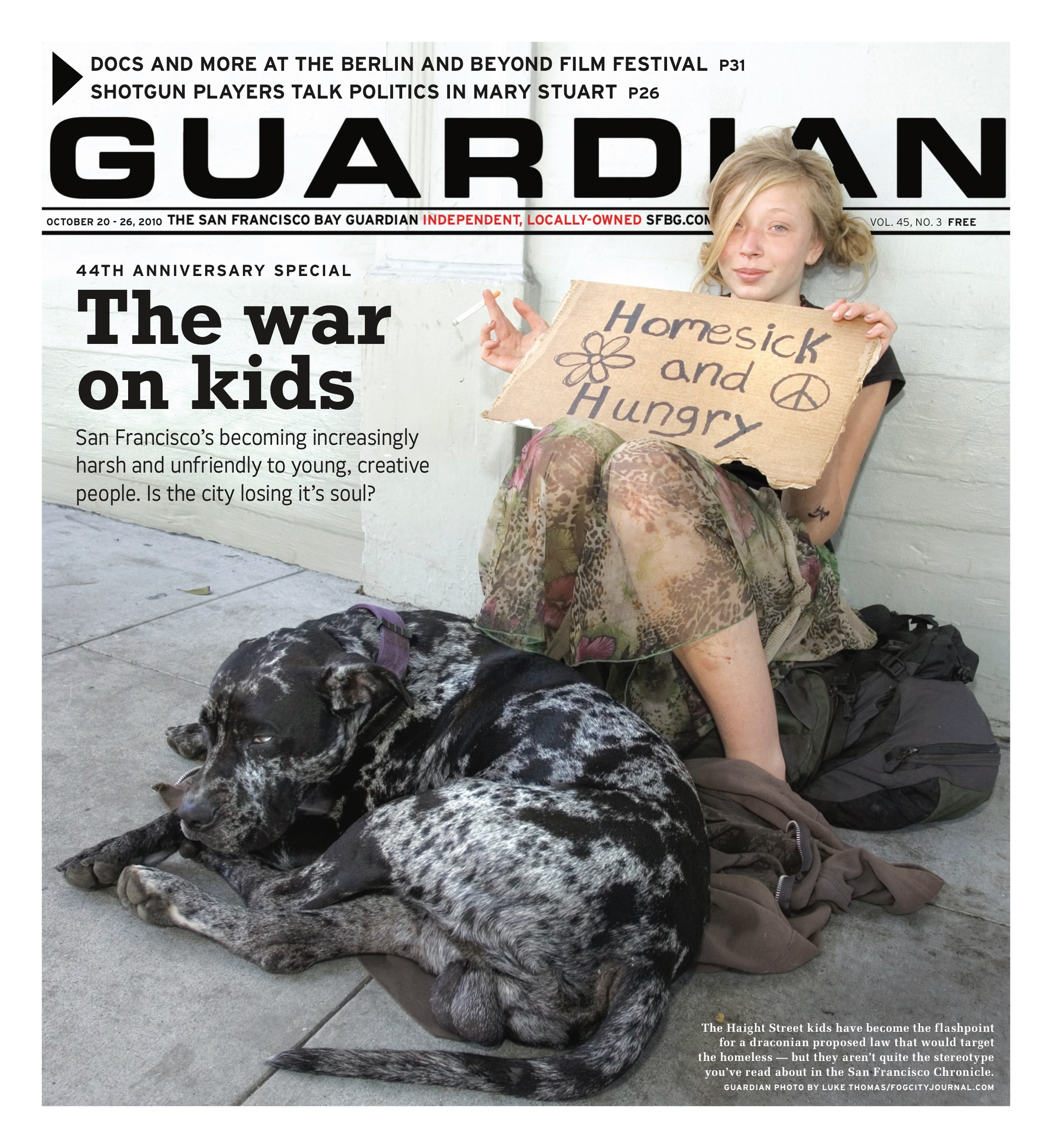rebeccab@sfbg.com
There was lots of anger from victims and legislators but very few substantive answers from regulators or Pacific Gas & Electric Co. officials during an Oct. 19 hearing at the state capitol on the Sept. 9 gas pipeline explosion that killed eight people, injured at least 50 others, and destroyed 37 homes in San Bruno.
State senators grilled PG&E executives and officials from the California Public Utilities Commission (CPUC), demanding to know why an aging segment of the San Bruno pipeline had been neglected despite having been flagged several years ago as high-risk and in need of repair.
Residents from San Bruno, including some who lost loved ones in the catastrophic incident, recounted their terrifying experiences of that night. Five San Bruno residents filed suit Oct. 19 against PG&E in San Mateo County Superior Court.
The complaints allege that the utility didn’t do enough to maintain the pipeline: “Investigation has revealed that the pipeline that exploded was a ticking time bomb,” one of the complaints states. “The San Bruno pipeline explosion was completely preventable.”
WHAT IS “SAFE”?
A central focus of the California Senate committee hearing was Line 132, the gas line that ruptured. PG&E installed the 30-inch, high-pressure steel pipeline in San Bruno some 50 years ago.
In 2007, the company approached the CPUC as part of an annual rate-setting process and asked for higher rates, justifying its request with a list of repairs that needed funding. A segment of Line 132, several miles from the epicenter of the explosion, was on the list. The CPUC granted a $5 million rate increase to complete the upgrade, but the work was never done. The money presumably went toward a different project deemed a higher priority.
In 2009, PG&E was back at the CPUC again with a second request for additional funding and a new project list in hand. Line 132 was included again, coupled with a document noting, “The risk of a failure at this location [is] unacceptably high.”
But even though the upgrade was never scheduled and the project never completed, Line 132 vanished from the repair list by the time PG&E returned to the CPUC as part of the rate-setting process in 2010. By then, an engineer had determined it would not have to be replaced for several more years.
“Our engineers looked at that piece of pipe and deemed it was safe until 2013, at which time we should continue to look forward to its construction,” Kirk Johnson, vice president of gas operations at PG&E, said during the hearing.
That assertion prompted Assemblymember Jerry Hill (D-San Mateo) to ask Johnson how PG&E defines “safe.” Reading aloud from the project summary included in the second request for funding, Hill noted, “‘The likelihood of failure makes the risk of a failure at this location unacceptably high.’ Are you saying that that description is a ‘safe’ condition?”
In response, Johnson launched into a detailed description of what factors are considered when calculating risk, but Hill cut him off. “Would that be considered a safe pipe?” he repeated.
“I think for a pipeline to be deemed safe, it needs to go through an analysis to ensure that it’s safe, and that line was deemed safe,” Johnson responded.
Essentially, PG&E reached different conclusions about the integrity of the same section of pipeline over the course of several years, and no one at the hearing seemed able to explain why. The utility flagged the pipeline stretch as being in need of replacement in 2007, received millions of dollars in the form of higher utility rates to do it, spent the money on a different repair instead, went back and requested more money citing the same repair, and then decided that the pipe would remain intact until 2013.
For all the inconsistency, that particular segment of Line 132 was not actually the same section that blew apart. CPUC Executive Director Paul Clanon emphasized this point. “The discussion that alarms me the most,” he said, “is the part that blew wasn’t on that list.”
Meanwhile, the San Bruno pipeline wasn’t the only utility infrastructure PG&E never fixed, even though ratepayers forked over the cost of the repair. A list released by The Utility Reform Network (TURN) focused on the electric side of the gas-and-electric company’s vast system, noting that the utility received millions in 2007 for a slew of reliability and safety-related projects, but never quite got around to completing them. Among the neglected projects were transformer replacements, gas meter protection upgrades, reliability and safety equipment, and inspections that can help identify deficiencies.
“Consumers are shocked to realize that when PG&E is authorized to raise rates, it gets the money with no strings attached,” said Mindy Spatt, a spokesperson for TURN. “PG&E is the only entity responsible for those pipelines, and the CPUC is the only entity that regulates PG&E. So between the two of them, the buck’s got to stop somewhere.”
THE WATCHDOG
A federal investigation by the National Transportation Safety Board (NTSB) to determine the cause of the blast has yet to reach any definitive conclusions. A preliminary NTSB report noted that just before the explosion, a system malfunction occurred when PG&E was working on a power-supply terminal in Milpitas, triggering a surge in the gas-line pressure.
Until the whole mystery is unraveled, regulators can’t accurately determine how to safeguard against such a tragedy in the future. “I have no idea how this could’ve been prevented,” Richard Clark, director of the consumer protection and safety division of the CPUC, said when asked what the agency could have done differently.
Legislators fired pointed questions about why this issue hadn’t been more closely scrutinized by the CPUC. “Did the PUC do any accounting when you gave them $5 million?” Sen. Dean Florez (D-Shafter) queried Clark. “Do we just give them money and cross our fingers and hope they fix it? Is that what we do? Until some terrible tragedy occurs?”
Clark’s response was that the CPUC does not manage on the level of individual projects — all the upkeep, maintenance, testing, and replacement of pipeline infrastructure is up to PG&E. The utility maintains its own list of needed repairs, and the company has license to prioritize repairs and funnel money from one project to another without seeking prior approval from the regulatory body. It conducts its own audits, and the regulatory agency looks over the paperwork.
“We can’t run the company for them,” Clark said. “We don’t take a microscopic look, if you will, at what it is they’re doing.”
A team of nine inspectors for the entire state of California is tasked with auditing PG&E’s infrastructure improvements. For the first time in years, the CPUC has submitted a request to hire a few more, Executive Director Paul Clanon noted. This small staff physically inspects about 1 percent of the state’s entire gas pipeline infrastructure. PG&E has about 5,700 miles of natural gas transmission lines, with about 1,000 miles in densely populated regions classified as “high consequence areas.”
Sen. Mark Leno (D-San Francisco) suggested that the CPUC should exercise more hands-on oversight. “Might it make sense to look at a different way of working with them?” Leno asked. He noted that the San Bruno explosion wasn’t the first time a PG&E pipeline failure had resulted in a loss of life or significant property damage. “We’ve got a pattern here,” Leno said. “And we’re not doing anything differently. In fact, we’re not even fining them.”
In 2008, a PG&E gas leak in Rancho Cordova led to a pipeline explosion, killing one person and injuring a few others. Leno reminded the CPUC of this tragedy, demanding to know if the agency had fined PG&E after finding the utility was at fault. It hadn’t yet, Clanon responded.
When Leno pressed for an explanation, Clanon said, “We were slow, and we should’ve been quicker.” The utility can be fined up to $20,000 for each violation, Clanon explained — and as things stand, there are no additional penalties for violations resulting in injury or death.
A HARD LOOK
Since the San Bruno pipeline explosion occurred, the CPUC has convened an independent panel of technical experts to assess the disaster, a parallel effort to the NTSB investigation. The committee will issue a set of recommendations on how PG&E should change its design, operation, construction, maintenance, or management practices to improve safety.
“We’ll be examining whether there may be systemic management problems at the utility,” Clark noted. The CPUC panel may also recommend new legislative changes to allow the state to clamp down on PG&E’s activities. “We’re taking a hard look at ourselves, and we’re taking a hard look at PG&E,” Clark said.
One point that’s abundantly clear is that the utility does not lack the money to address its system deficiencies. PG&E revenue was $13.4 billion in 2009, its rates are 30 percent higher than the national average, and its shareholders receive a cool 11.35 percent return on equity.
The utility came under fire this past spring for sinking $40 million into Proposition 16 — a ballot measure that would have effectively eliminated competition for the monopolistic utility by snuffing out municipal power programs. Now that its unaddressed repairs in San Bruno and elsewhere have come to light, the company’s profits and substantial executive bonuses may come under closer scrutiny.
Yet whatever regulatory changes come into play will hardly matter for those San Bruno residents whose lives were permanently altered by the loss of family members. James Ruigomez, a resident who testified at the hearing, told legislators that his son’s girlfriend, Jessica Morales, had just settled down to watch a football game with his son Joe Ruigomez on the night of the explosion. Morales died in the blaze and Joe is still recovering in the hospital.
The tragedy filled James Ruigomez with guilt and sorrow, he said — but also anger. “Extreme anger,” he added, “knowing that this possibly could’ve been prevented.”


